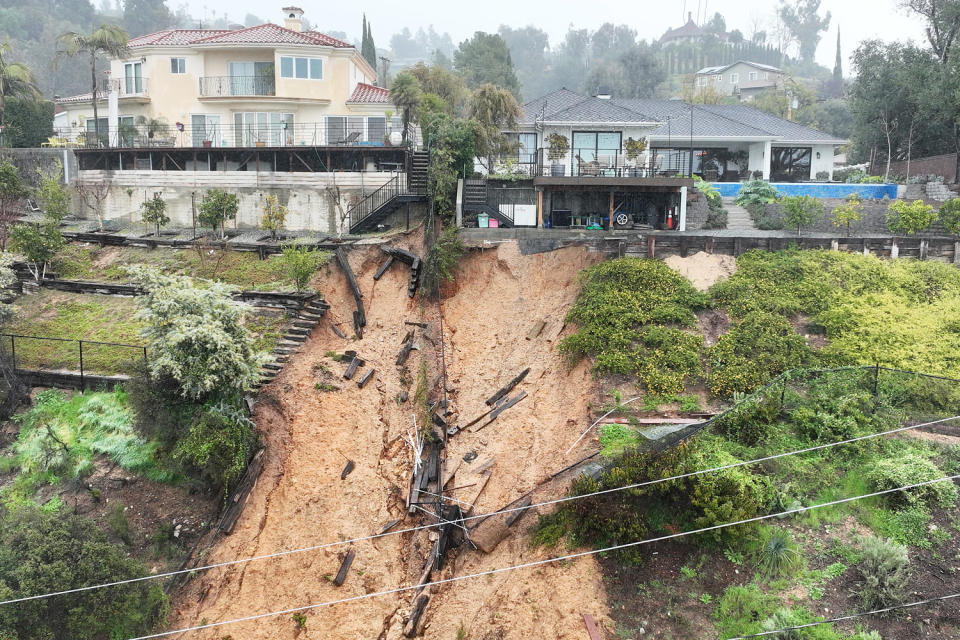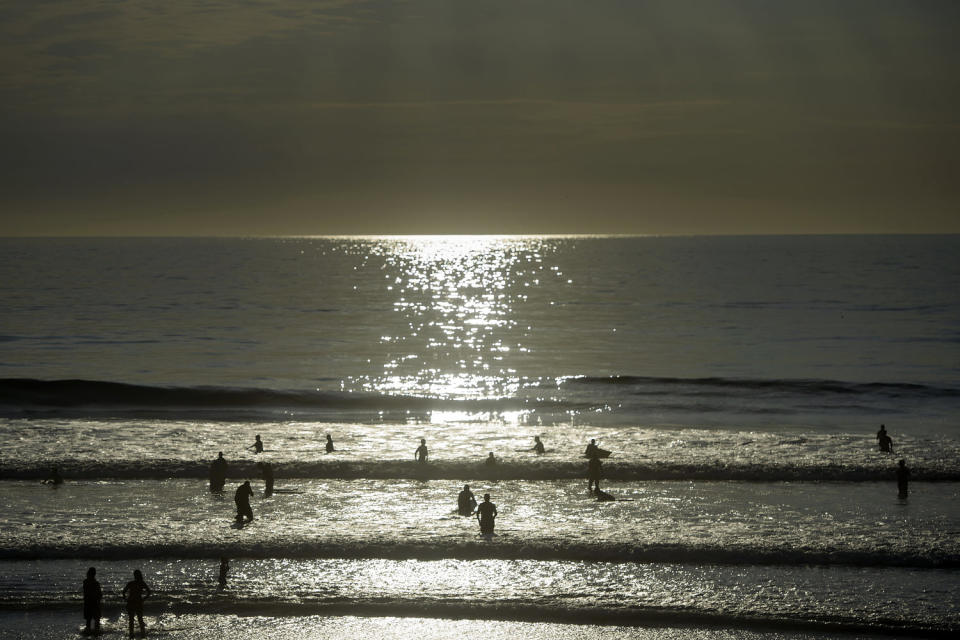SAN DIEGO – In 1983, El Niño caused historic flooding in parts of Southern California, toppling parts of fishing piers and prompting some to travel the flooded streets by surfboard. It returned in 1998, dusting the regional mountains with snow through May.
In the collective minds of Californians, the weather phenomenon defined by an eastward-moving, warmer-than-normal sea surface along the equatorial Pacific Ocean is shaped by those traumatic, powerful winters with record precipitation.
But as some geoscientists see a bit of 1983 or 1998 in next winter’s strong El Niño, they may be ignoring a new reality: A stormy, wet El Niño of that vintage has not hit California this century.
Professor Jin-Yi Yu, a professor of Earth System Science at the University of California, Irvine, whose doubts about a predicted “Godzilla El Niño” were confirmed in 2015-2016, sees the phenomenon as permanently changed.
“El Niños in these respective centuries are different,” Yu said in a series of emails. “The recent El Niño and La Niña events have behaved differently than we initially expected.”
While Yu is once again a rare voice discounting the chances of a wet El Niño for California this winter, many of the state’s most influential weather observers are not entirely opposed to his bearish outlook.
The National Oceanic and Atmospheric Administration said the current El Niño is “strong” by its measurements, which could translate into strong storms hitting parts of the state.
State Climatologist Michael Anderson, who also expressed some doubt about the 2015 “Godzilla El Niño” predictions, has urged Californians to be prepared for essentially anything.
“Until better seasonal forecasts are available, California is preparing for both extremely wet and extremely dry conditions,” he said by email.
That can be wise in a weather world that sometimes seems upside down.
Although the 2022-2023 season was designated as a La Niña year — usually drier and cooler — the state received 141% of average precipitation for the water year ending Sept. 30, according to the California Department of Water Resources. Snow cover in the Sierra Nevada mountains rivaled that of 1983, the report said.

How accurate are El Niño predictions?
Tim Barnett, the late marine geophysicist at the University of California, San Diego’s Scripps Institution of Oceanography, predicted the strong, stormy El Niño winter of 1997-98, a quantum leap for a meteorological world that is still 50-50 with ten day forecasts.
It was the first, last and only time a stormy El Niño was successfully predicted for California. According to meteorologist Jan Null’s Golden Gate Weather Services, storms that season caused $850 million in damage in the state and doubled normal precipitation.
Null, a retired chief forecaster for the National Weather Service’s San Francisco Bay Area office, said there have been 26 El Niños and 25 La Niñas since 1950, with the vast majority of the former failing to behave as those of 1982-83 or 1997-98. .
“El Niño is the Stephen Curry superstar of the game,” Null said, referring to the Golden State Warriors point guard. “But sometimes someone else has a good night and has a bigger influence.”
Last winter’s wet La Niña, he said, “completely flipped the script.”
What are the chances of a rainy winter?
Anderson, the state climatologist, said an even number of El Niños have caused dry and wet winters this century. “El Niño in itself does not always translate into wet conditions,” he said.
The Scripps Institution’s Center for Western Weather and Water Extremes puts the chances of a wetter-than-normal winter for most of California at 50-50, although the basis for this is historical data and not long-term forecasts.
A NOAA long-range forecast map from October shows equal chances of above or below average rainfall this winter for California’s southernmost coast, with the chances “leaning” in favor of above normal rain for the rest of Southern California and extending into the Bay Area.
The state Department of Water Resources said last month that residents should prepare for “the possibility of another wet season under strong El Niño conditions.”
Shang-Ping Xie, a climate scientist at the Scripps Institution, puts the odds of a rainy El Niño in California this winter at 2-1.
“We had a three-year La Niña,” he said. “Two were dry and one was wet. The odds are not that different from the typical results, which say La Niña favors a dry winter.”
But in the two classic examples of stormy El Niño winters for California, the month of March was hit with rain, wind and damage.
“March is the time when we believe the tropical ocean has the most impact on North America,” Xie said.
Are there other factors that influence the prediction?
Although its behavior can be unpredictable, identifying El Niño is relatively simple, depending on a huge stretch of water in the equatorial Pacific Ocean that, when found to be consistently warmer than average, gives rise to the explanation of the phenomenon, normally for the winter.
The relative warmth of El Niño can affect atmospheric circulation along the equator and push a jet stream that normally aims for the Pacific Northwest southward, leaving that area drier and the southeast wetter.
El Niño’s no-show in 2015-2016 led Yu of UC Irvine to look into possible causes, and today he believes other weather and man-made phenomena are influencing it.
He thinks global warming, in part, and possibly deforestation in Southeast Asia, may have helped create a second warm stretch of water, bordering El Niño, that could thwart the old ways.
This century’s El Niños have “shifted westward toward the central Pacific and have lasted longer, making them multi-year events,” Yu said. “El Niño has changed.”


Xie, the Scripps researcher who believes the odds are favorable for a stormy El Niño, nevertheless believes there are influences on the phenomenon caused by climate change. For example, he said, the ocean around the surface warming that defines El Niño also warms in the long term.
What happens when that heat becomes the new baseline for a wider swath of ocean?
“If that pattern holds in the future, the influence of El Niño will become stronger,” Xie said.
He believes El Niño data and computer models may not be able to keep pace.
“There are still many questions we need to answer,” he said.
Null said all eyes are on academia to help figure out what happens with El Niño, especially for the country’s most populous state, which normally comes in its path.
“It’s a game where you’re constantly learning,” he said. “We have evolved in our understanding of El Niño, but then complicated it as the atmosphere and oceans warm.”
“Are we going to last?” he asked. “Don’t know.”
This article was originally published on NBCNews.com